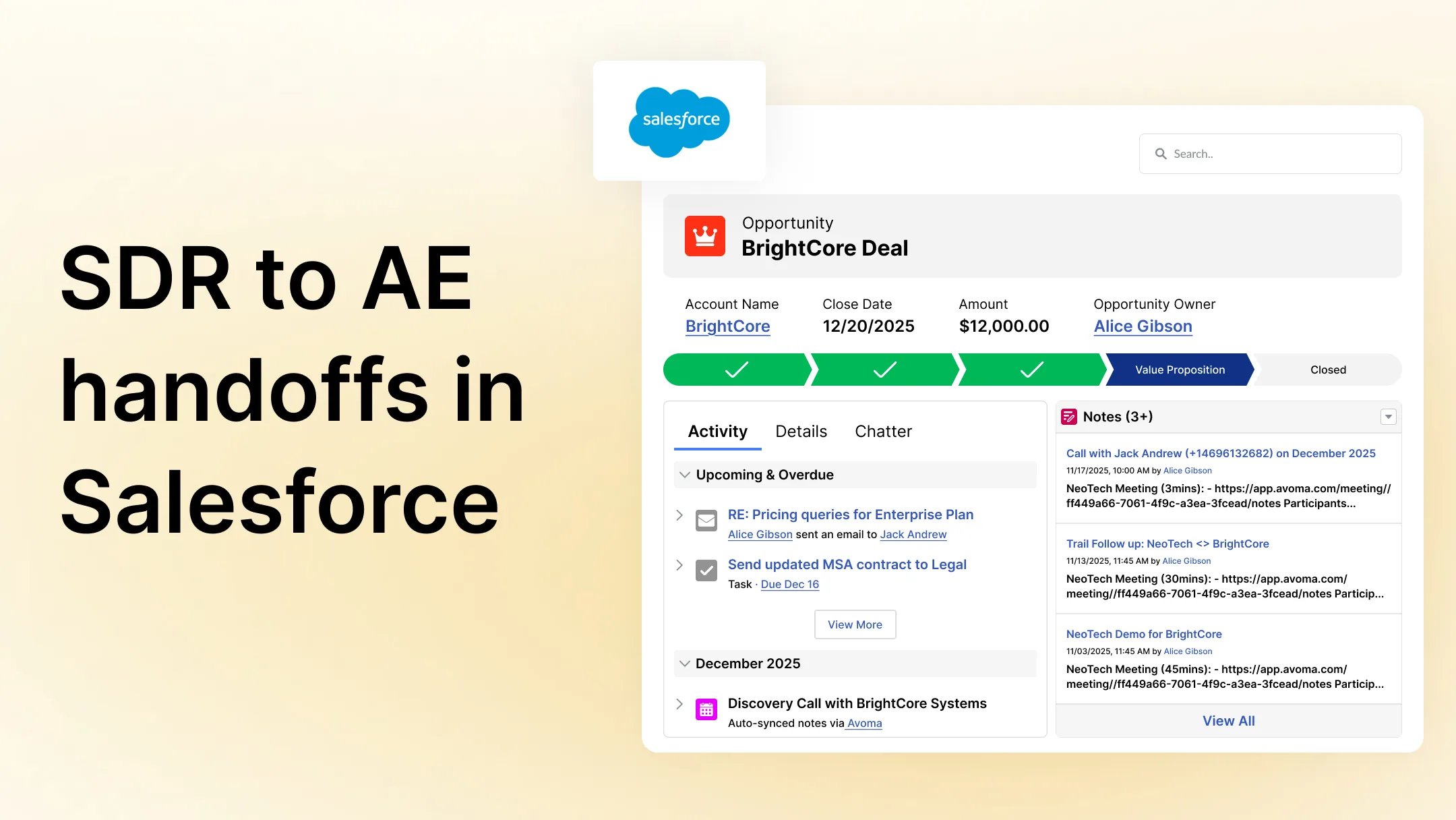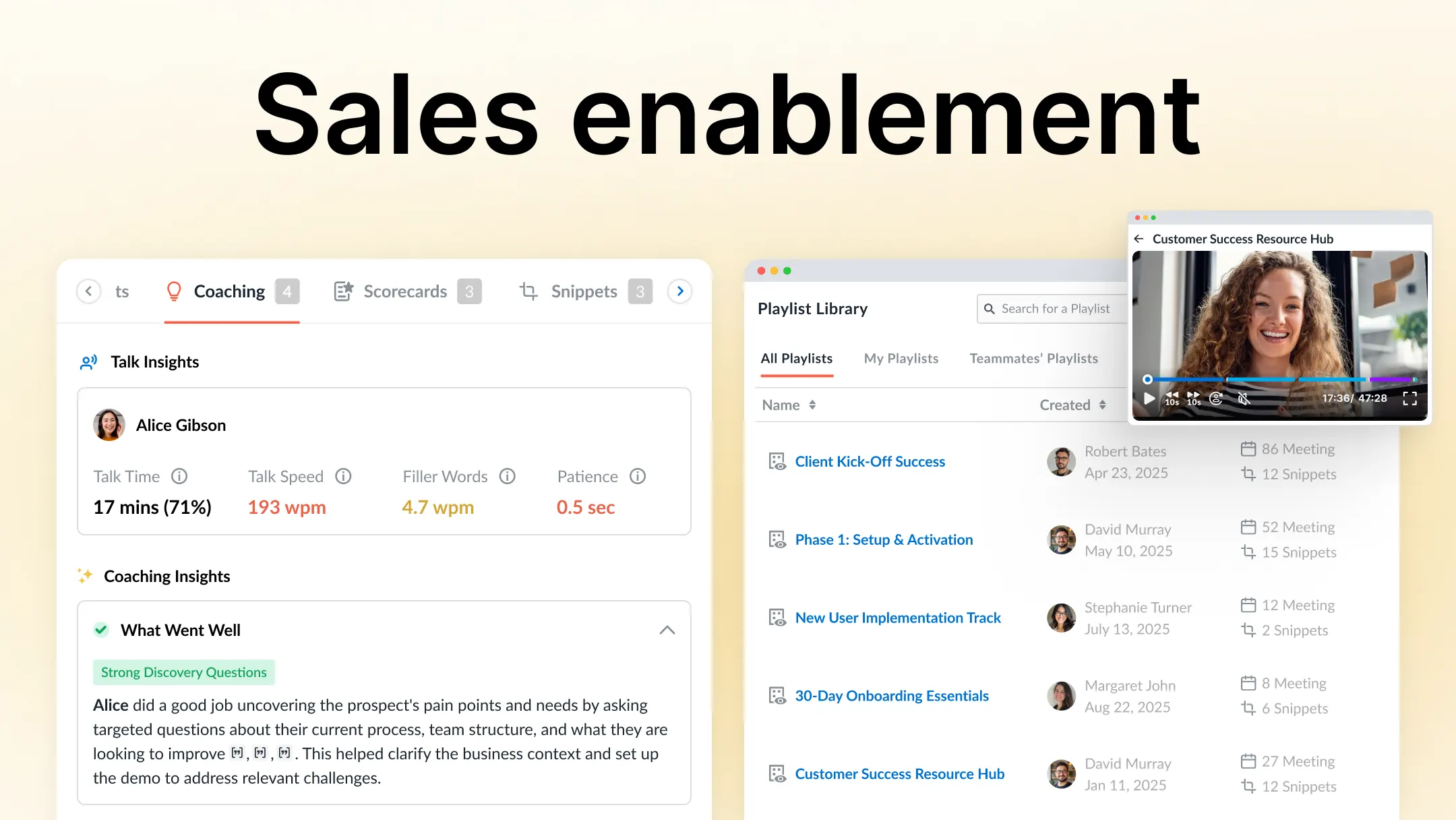Sales pipeline management for reps, managers, and leaders. Know who owns what
Table of Contents:
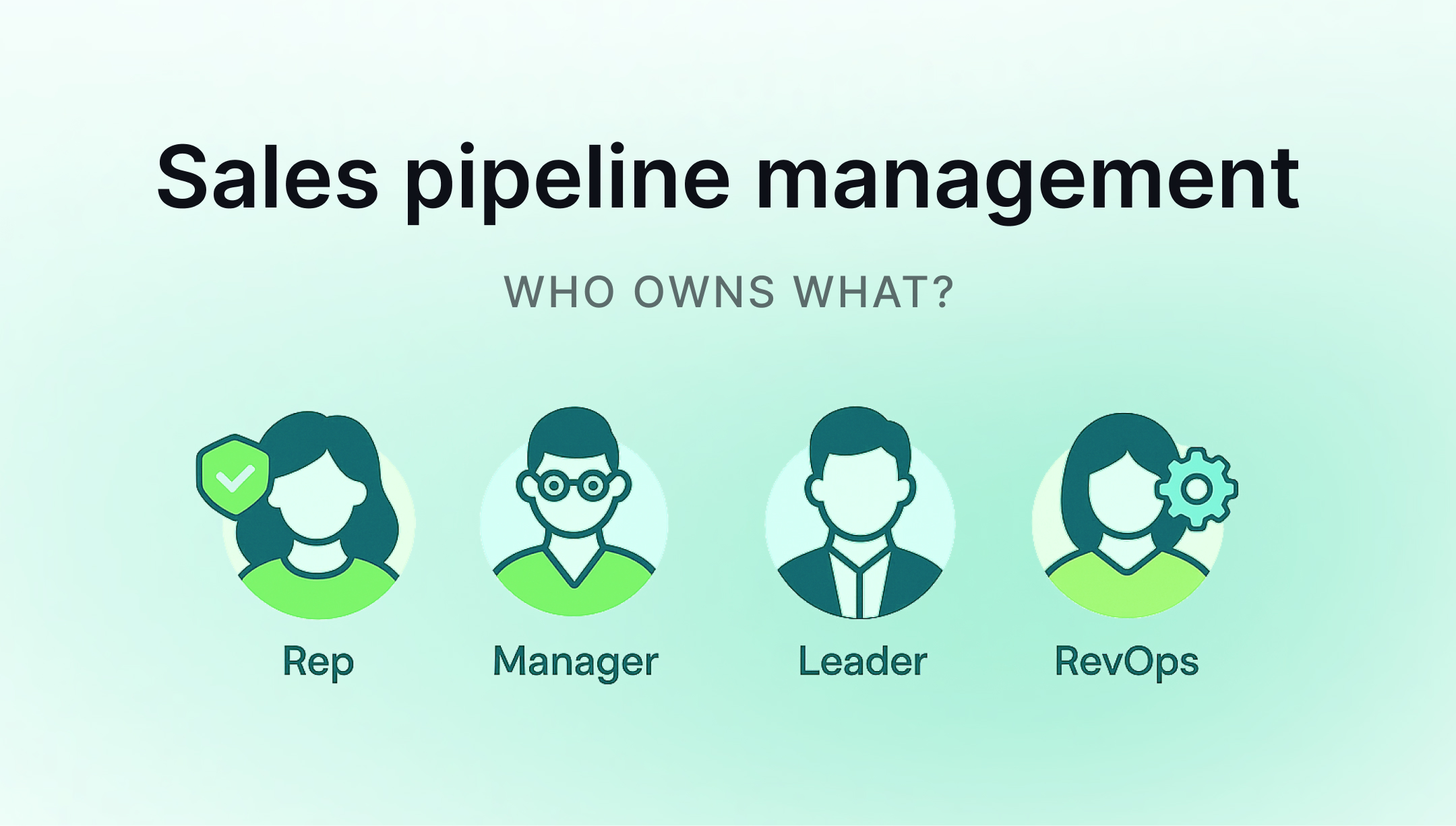
Sales pipeline management is the operating system of your revenue team.
Pipeline reflects reality when each role, reps, managers, leaders, and RevOps, owns their part. Forecasts become accurate, coaching gets sharper, and deals move with discipline instead of optimism.
This guide breaks down pipeline management role by role so you can run it as a system, not a spreadsheet.
TL;DR: Sales pipeline management for revenue leaders
- Sales pipeline management is a shared system, not a rep task.
- Reps keep deals clean, managers inspect and coach, leaders enforce discipline, RevOps ensures structure.
- Reverse-engineer from closed-won deals to fix upstream issues.
- Enforce clear stage criteria and run disciplined weekly reviews.
- Done right, pipeline management turns optimism into accurate forecasts and predictable revenue.
- Tools like Avoma add visibility, enforce discipline, and surface risks in real time for accurate forecasts and predictable revenue.
What is sales pipeline management (for leaders)?
Sales pipeline management is how revenue leaders control deal flow across every stage of the sales funnel. It’s the system behind clean forecasts, qualified leads, and consistent execution. When it’s working, you know which deals are real, what’s stuck, and where to coach. When it’s not, you’re left guessing. The best sales leaders don’t just review pipeline, they shape it.
That means inspecting pipeline stages, enforcing clear criteria, and driving sales rep accountability through signals, not sentiment. They have tighter control over how deals are created, qualified, advanced, and forecasted.
Why is sales pipeline management important?
Because it’s the only way to run a predictable, accountable revenue process.
When sales pipeline management is weak, teams chase ghost deals instead of closing real ones, forecasts break down, managers stop trusting the numbers, and leaders are left making decisions on hope.
But when pipeline is managed well:
- Reps know which deals to prioritize
- Managers know where to coach
- Leaders know what revenue is actually coming in
- The entire org rallies around a shared set of facts
Reverse-engineering revenue: What makes a pipeline work
To strengthen your pipeline, begin by examining the deals that have closed. This section explains how to identify what’s working in your sales process and how to rebuild your pipeline based on real results.
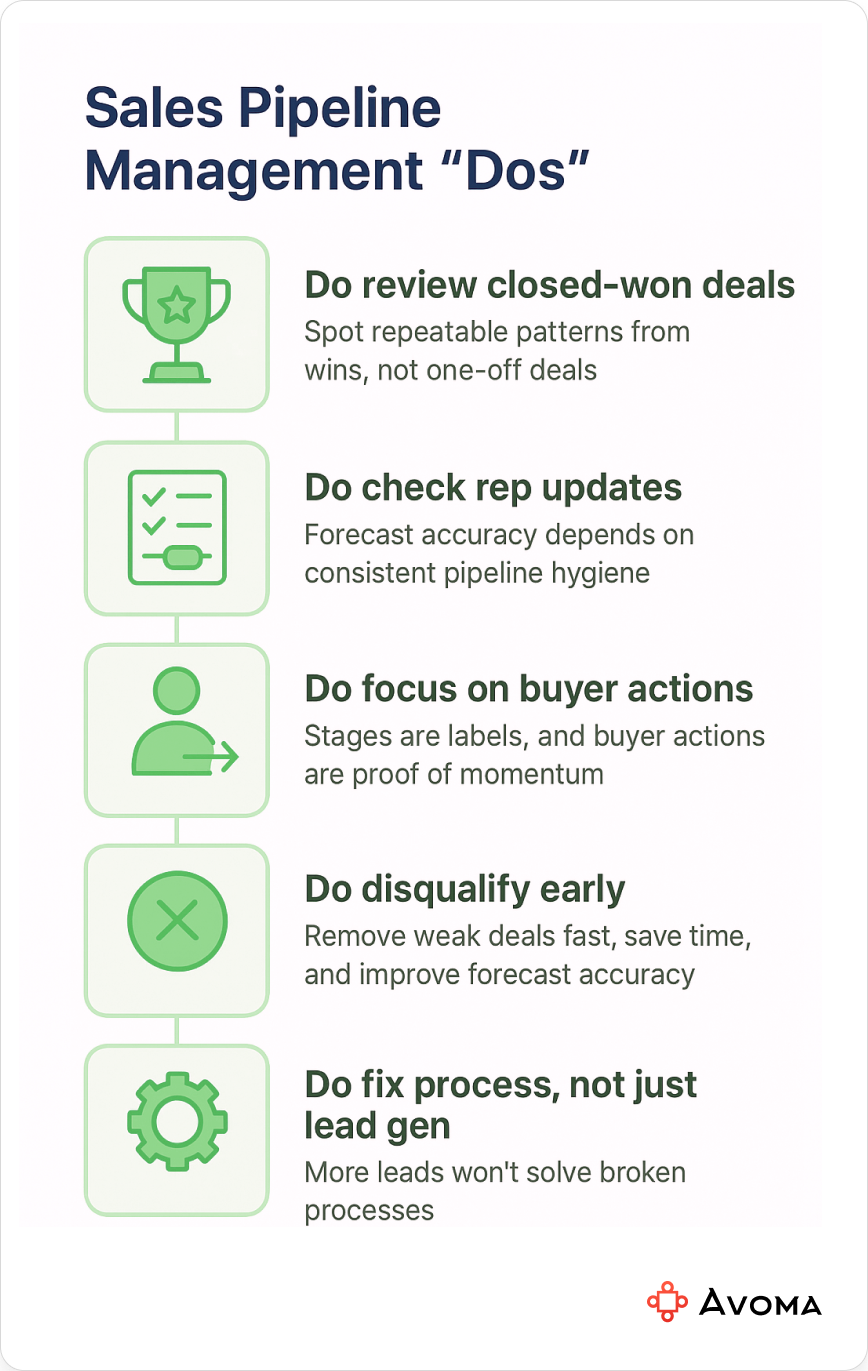
Here’s what to look for in your sales process if you want forecasts you can stand behind:
1. Look at closed-won deals to see what’s working
Start by reviewing the deals that actually closed. What did those sales cycles look like? What steps did buyers take? What activities did reps consistently complete? You’re looking for patterns you can repeat, not one-off wins. Use this to build your process from the bottom up.
2. Check how reps are updating deals
Forecasts are only as good as the data behind them. If reps aren’t updating pipeline stages, logging buyer activity, or removing dead deals, your numbers will always be off. You don’t need perfect CRM tools. You need consistent behavior and managers who inspect it regularly.
3. Focus on buyer actions, not just stage names
Just because a deal is in “proposal” doesn’t mean it’s moving forward. Look for signs of real momentum: upcoming meetings, shared next steps, more people joining the deal. Pipeline stages are labels. Buyer actions are proof.
4. Disqualify bad deals early
Reps should qualify fast and disqualify faster. A good opportunity isn’t just about fit or budget. It’s about urgency, access to decision-makers, and clear next steps. Don’t let bad deals sit in the pipeline. They hurt your sales forecast and waste your team’s time.
5. Don’t rely on top-of-funnel to fix deeper problems
More lead generation won’t help if your process is broken. Use top-of-funnel activity to spot issues: Are you bringing in the right qualified leads? Are SDRs booking real meetings or just filling your CRM tools? If your closed-won patterns don’t match your lead list, something’s off.
What are the right pipeline stages to track?
The right stages are the ones that reflect your real sales process and can be enforced consistently. At a minimum, track these six:
1. Awareness: Lead added to CRM tools
2. Qualified: Meets ICP and shows interest
3. Discovery: Needs confirmed, engagement active
4. Proposal: Pricing and solution shared
5. Commit: Verbal confirmation, decision-makers aligned
6. Closed: Deal is won or lost, with reasons documented
Each stage should have clear entry and exit criteria so reps know exactly when to move a deal forward. For a more detailed model, see Avoma’s 9-stage sales pipeline framework, which adds steps like prospecting efforts, negotiation, and post-sale support.
Who owns what in pipeline management?
Pipeline health depends on shared responsibility, not just sales rep activity. This section breaks down who owns which parts of the sales pipeline across Sales, RevOps, and leadership.
How should sales reps manage their pipeline?
Reps own the accuracy of what’s in the pipeline. That includes:
- Keeping pipeline stages up to date
- Logging buyer signals and next steps
- Disqualifying deals that aren’t real
- Making sure each opp reflects the latest info
Key behavior: Log sales activities in real time and keep deals clean.
Key metric: % of opportunities with next steps and update latency.
How should sales managers inspect pipeline quality?
Sales managers are responsible for making sure the pipeline reflects reality.
- Run structured reviews that focus on motion, risk, and next steps
- Coach reps to disqualify early and tighten deal criteria
- Spot bottlenecks in stage progression and behavior
Key behavior: Ask good questions. Don’t just ask for updates.
Key metric: Forecast accuracy, push rate, deal velocity.
What is sales leadership’s role in pipeline discipline?
CROs and VPs of Sales own the overall system. They make sure pipeline hygiene scales across teams.
- Define and enforce pipeline stage criteria
- Align pipeline reviews with sales forecast goals
- Drive org-wide discipline around updates
Key behavior: Reinforce clarity, consistency, and cadence.
Key metric: Pipeline consistency, stage accuracy, coaching adoption.
What should RevOps and enablement own in pipeline success?
RevOps owns the data layer. Enablement ensures people know how to use it.
- Set up dashboards and alerting for pipeline health
- Enforce CRM tools logic and field requirements
- Train reps and managers on expectations
Key behavior: Make the right behavior obvious and the wrong one hard.
Key metric: CRM compliance rate, adoption, time-to-update.
How should sales leaders run effective pipeline reviews?
Most pipeline reviews are status updates. Great ones are inspection meetings. This section shows how to turn your review cadence into a weekly operating rhythm that actually drives sales revenue.
What’s the purpose of a pipeline review?
The purpose of a pipeline review is to ensure accuracy, health, and momentum in the sales pipeline so leaders can forecast reliably and teams can focus on the right opportunities.
How often should pipeline reviews happen?
Weekly is ideal. Some high-velocity teams do biweekly. What matters most is consistency and making it part of your team’s operating rhythm. Set a fixed day and time. Keep the structure tight. Make sure managers and reps come prepared.
What should the pipeline review meeting agenda include?
Here’s a simple structure that works at any level:
- Deals at risk: What’s slipping or stalling?
- Deal movement: What moved stages and why?
- Next steps: Are they real, scheduled, and confirmed?
- Coverage: Do we have enough pipe for future quarters?
- CRM hygiene: Are stages accurate and updated?
Don’t review every sales prospect. Focus on the ones that matter and the ones that shouldn’t be there at all.
What should leaders listen for during pipeline reviews?
Look for signals that reps are guessing, not managing:
- No buyer activity in over 2 weeks
- No clear decision-maker involved
- No confirmed next steps
- Reps pushing deals without new info
These aren’t small misses; they’re early warnings that the sales pipeline isn’t real.
How can managers turn pipeline reviews into coaching?
Don’t just question the deal, question the behavior behind it. Help reps learn:
- When to disqualify
- How to secure next steps
- How to multi-thread and build urgency
What are the most common pipeline management mistakes?
Even experienced teams fall into bad pipeline habits. This section highlights the most frequent issues that hurt forecast accuracy, slow down deals, and waste rep time.
Why do reps hold on to bad deals?
Because they don’t want to lose pipeline coverage, or they’re afraid to admit a deal is dead. Without a clear disqualification culture, bad opps stay in the pipe too long and clog the system.
Fix it: Normalize early disqualification. Reward accuracy, not optimism.
What happens when there are no next steps?
Lack of next steps makes sales cycles stall, momentum die, and reps lose visibility into the buying process. If there’s no calendar invite, task, or confirmed next step, the deal isn’t real, no matter what the stage says.
Fix it: Make “no next step” a review red flag. Inspect for motion, not just labels.
Why do teams over-forecast?
Teams over-forecast because of pressure, gut instinct, and lack of inspection. When reps guess and managers don’t challenge, the sales forecast becomes wishful thinking. This usually leads to last-minute misses and trust issues with leadership.
Fix it: Tie forecast to buyer behavior, not rep confidence.
What’s the risk of loose pipeline stage definitions?
If reps don’t know what qualifies a deal to enter or leave a stage, pipeline data becomes unreliable. You’ll see inflated commit stages, inconsistent progression, and late-stage surprises.
Fix it: Define entry and exit criteria for every stage. Enforce it consistently.
Why does pipeline hygiene only happen before board meetings?
Because leaders treat cleanup as a one-off event, not a weekly habit. If updates only happen before a forecast is due, your data will always lag behind reality.
Fix it: Build hygiene into weekly reviews. Inspect what you expect.
How is modern pipeline management different from traditional approaches?
The way leaders manage pipeline has changed because buying behavior has changed. This section contrasts old habits with modern practices that drive accuracy, visibility, and motion across teams.
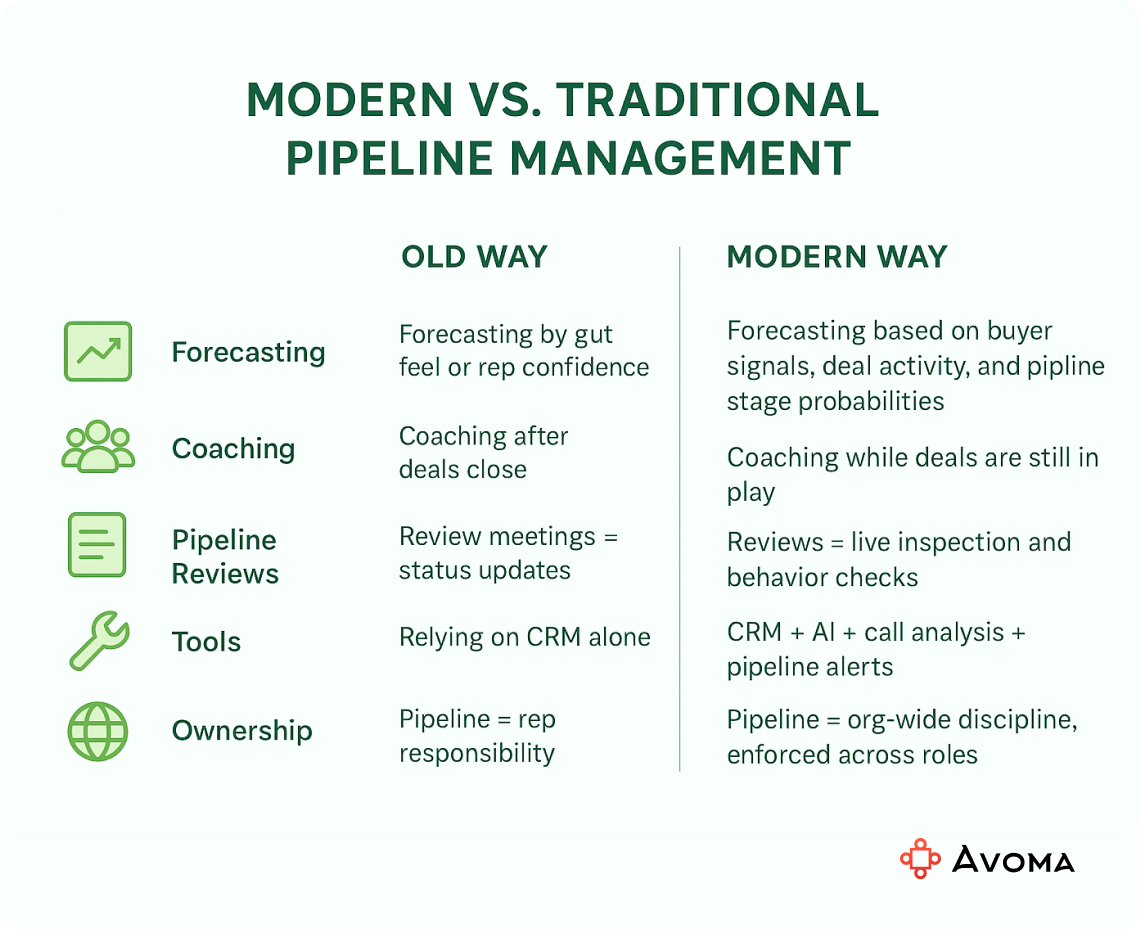
What’s changed in how leaders forecast?
Old way: Forecasting by gut feel or rep confidence
Modern way: Forecasting based on buyer signals, deal activity, and pipeline stage probabilities
Modern teams use real-time CRM tools, mutual action plans, and activity tracking (like sales calls, meetings, and emails) to improve accuracy and eliminate guesswork.
How is pipeline coaching evolving?
Old way: Coaching after deals close
Modern way: Coaching while deals are still in play
Instead of post-mortems, strong teams coach based on what’s in the pipeline right now. They look at deal progression, objections, and stuck opps to help reps course-correct early.
What makes a pipeline review effective today?
Old way: Review meetings mean status updates
Modern way: Reviews mean live inspection and behavior checks
Modern reviews focus on next steps, buyer engagement, and CRM accuracy. They’re short, focused, and consistent (not slide decks full of fluff).
What tools do modern teams use for pipeline reviews and management?
Old way: Relying on CRM alone
Modern way: CRM + AI + call analysis + pipeline alerts
Teams now use revenue intelligence tool (like Avoma) to track deal signals, identify risk, and analyze conversations, giving sales managers better visibility and reps better support.
Who owns pipeline in a modern org?
Old way: Pipeline is reps' responsibility
Modern way: Pipeline is an org-wide discipline, enforced across roles
Today, RevOps, enablement, and leadership play critical roles in enforcing pipeline standards, coaching behavior, and building dashboards that reflect real-time progress.
How should large organizations choose pipeline management software?
In large orgs, the challenge is visibility, consistency, and control. Choosing the right pipeline management software means solving for:
- Cross-team consistency: Can it standardize pipeline stages and rules across multiple teams or regions?
- Inspection, not just reporting: Does it help managers and leaders spot risk and coach behavior, not just view dashboards?
- CRM integration and hygiene enforcement: Will it auto-log activity, flag missing data, and clean up messy CRM inputs?
- Forecast visibility: Can it show deal progression tied to actual buyer signals, not just rep-entered data?
- Enablement and adoption: Is it usable enough that reps won’t ignore it, and powerful enough that RevOps can enforce it?
How Avoma helps with modern pipeline management for SMBs as well as large enterprises
Avoma is an end-to-end pipeline management solution for revenue teams. It gives sales teams visibility into pipeline activity that CRM tools alone can’t show. It connects the dots between conversations, buyer behavior, and deal progression. This helps GTM teams coach better, forecast smarter, and clean up pipe before it’s too late. how to improve pipeline accuracy using automated insights?
Here is how Avoma improves pipeline accuracy using automated insights:
1. For reps: Auto-syncs notes and next steps from calls, tracks engagement signals, flags gaps in sales methodology adherence, and updates CRM.
.png)
2. For managers: Highlights engagement across deals, methodology adherence across all deals, monitors pipeline stages, and surfaces risks in weekly pipeline reviews

3. For leaders: Improves forecast accuracy by tying pipeline data to real buyer actions
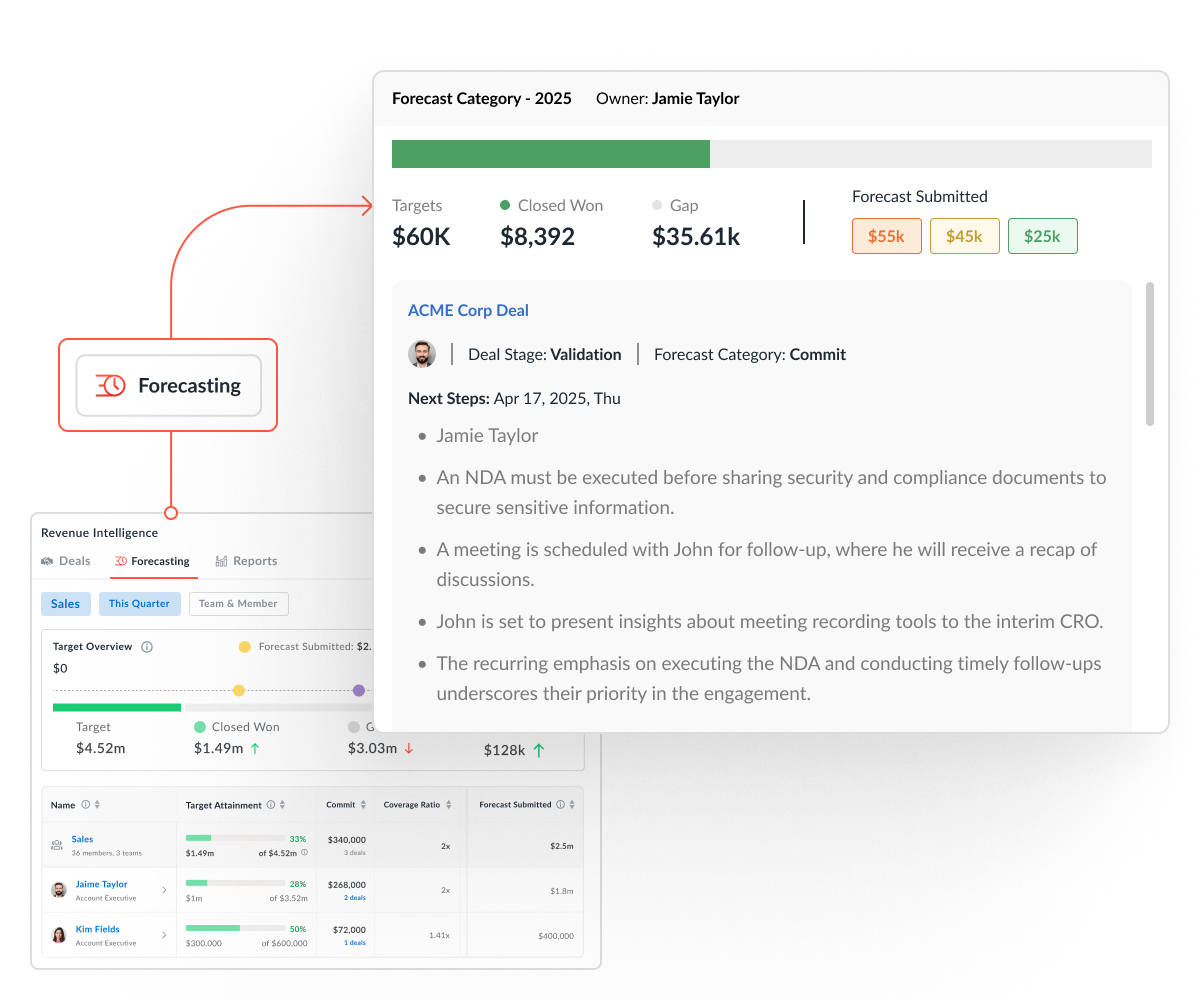
4. For RevOps: Standardizes stage definitions, enforces CRM logic, and automates pipeline hygiene alerts
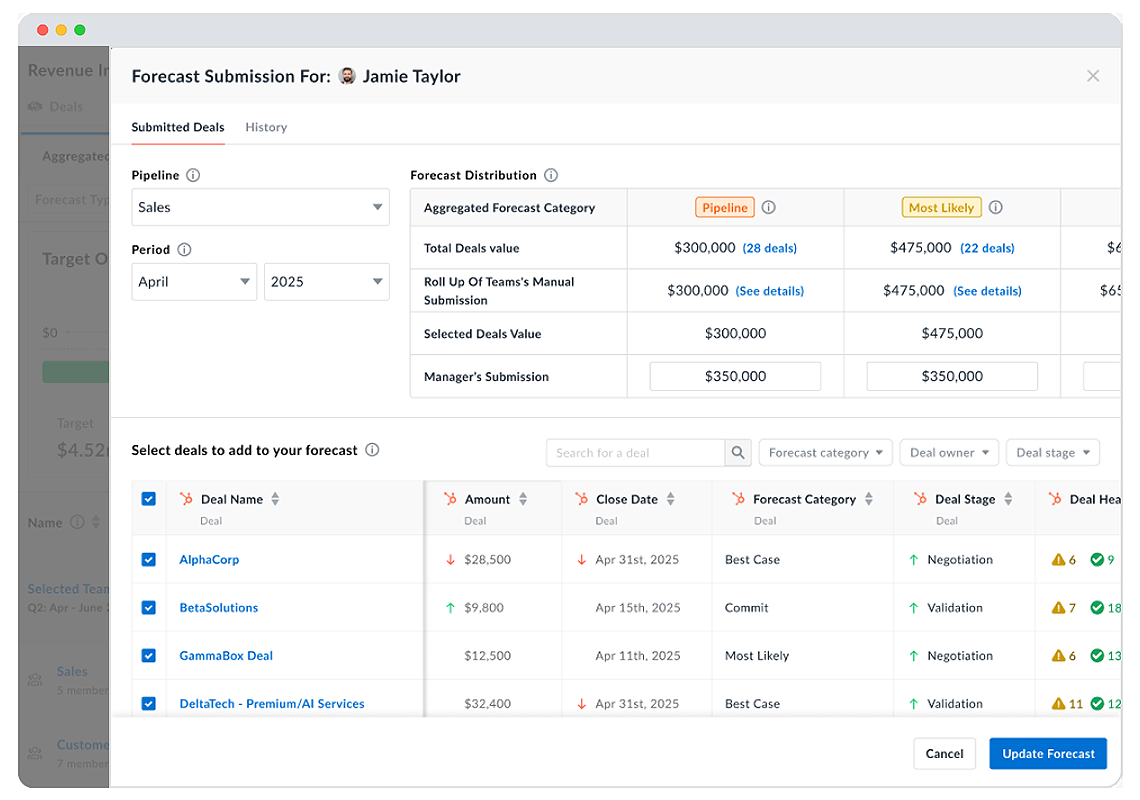
If your team needs more than a spreadsheet view of pipeline, Avoma brings the sales activity layer and inspection tools into one platform.
Pipeline management is a system, not a spreadsheet
Sales pipeline management isn’t about filling in stages or checking a dashboard. It’s about creating a shared system that drives motion, accuracy, and accountability across every role.
If your team struggles with inconsistent data, stalled deals, or forecast chaos, don’t throw another tool at the problem. Start by reverse-engineering what works. Define your stages. Set clear expectations. And make inspection a weekly habit, not a last-minute scramble.
Want help getting started?
Book a demo of Avoma’s deal inspection tools to see where the gaps really are.
Frequently Asked Questions
Sales pipeline management is how leaders track and manage the flow of opportunities from lead to close. It ensures each stage of the sales funnel is clearly defined, actively monitored, and tied to rep behavior and buyer actions.
If your pipeline stages are consistently enforced, match your actual sales process, and support accurate sales forecasting, then they’re working. If you see stalled deals, bloated pipelines, or last-minute surprises, it’s time to reassess.
Everyone. Sales reps keep it clean. Sales managers inspect and coach. Leaders enforce the system. RevOps maintains the structure. Pipeline health depends on shared ownership.
A good pipeline review focuses on risk, deal stage movement, next steps, and CRM tools hygiene. Skip status updates and inspect behavior instead.
Weekly is standard for most B2B teams. High-velocity teams might do them twice a week. The key is consistency.
Your sales pipeline is the full set of active opportunities. The sales forecast is what you expect to close, based on deal stage, buyer signals, and rep input.
Beyond a sales CRM, tools like Avoma enhance pipeline management by analyzing deal signals, surfacing risk, and connecting activity to buyer behavior in real time.






What's stopping you from turning every conversation into actionable insights?



